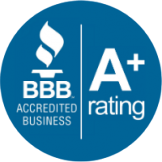Hicksville Roofing: Article About Research To Improve Roofs
Photovoltaic solar panels are panels of varying sizes that convert solar radiation to electricity. Most of these sustainable energy sources use silicon in their production, but researchers are working to create less fragile and more durable solar panels with flexible polymers.
Hicksville roofing contractor answers a question: Are cool roofs really as efficient as they claim?Cool roofs can reduce interior heating, lower energy usage and prevent the troubling urban island effect in large cities, but their level of value partially depends on where your roof is located. These energy-saving roofs work best where there are many days of full sunlight and plenty of heat. Hot, humid climates benefit significantly from cool roofs while cooler climates receive less benefit. The Department of Energy reports that cool, reflective coatings or colors can keep roofs 50 degrees cooler than dark asphalt roofs.

It may be hard to believe, but researchers are looking to used cooking oil, nanotechnology and a host of other surprising sources to create more energy-efficient roofs. Universities, private research labs, roofing associations, state and federal agencies and dozens of other organizations have been working for years to develop energy-efficient roofing and construction materials. Many of these developments are already on our residential and commercial roofs, from cool roofs to elastomeric and spray foam coatings.
There are even more new developments on the horizon for the roofing industry. Your experienced Hicksville roofing contractor can give you information about today's latest products and how they fare on local roofs, but there are several advances you can expect to hear more about in the future.
First there were cool roofs, and now, there are smart ones. Researchers have successfully designed an "intelligent" roof coating that blends the advantages of cool roofs with the warming benefits of black roofs. Regular shingles treated with this "intelligent" coating lowered roof temperatures by 50 to 80 percent on hot days and increased roof temperatures 80 percent on cold ones. Made from used cooking oil, the polymer coating changes its reflective properties according to the temperature, allowing homeowners to take advantage of sun and heat absorption in cool weather and deflect it in the summer. In spite of its beginnings as a fast food restaurant's used fryer oil, the polymer has no odor and is nontoxic and non-flammable. The successful development was announced in 2010, and is in the being developed for public use.
Have a question regarding EPDM rubber roofs or roof inspections? Ask Long Island Roofing of Hicksville NY.
Next, we head from the fryer to the "fire." If you already have solar shingles or solar panels on your roof, you may have experienced the dip in efficiency created by dust accumulation on your panels. The Department of Energy's Oak Ridge National Laboratory is developing a transparent and affordable self-cleaning coating that prevents this soiling. Using the lab's superhydrophobic coating technology, the advanced coating will be available as a spray or paint to be applied to panels during regular maintenance or repair visits.
Moisture control on photovoltaic solar panels is just as troubling as soiling, and researchers have created a test to detect incredibly small amounts of moisture on the solar film. The NREL Electric Calcium Test, or e-Ca, can help solar roofing technicians determine if moisture barriers are intact and durable, helping solar panel customers preserve their solar energy sources.
And finally, it's back to used cooking oil for a new bioasphalt that can reduce the cost of the asphalt used in roads, shingles and flat roof coatings. Several labs and researchers have been working on bioasphalt programs, and the latest comes from the University of Washington. There in 2014, scientists announced that they created asphalt from waste cooking oil. The cost is one-third to one-quarter of the cost of traditional asphalt and is expected to be road-tested in the summer of 2014.









